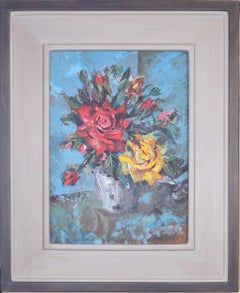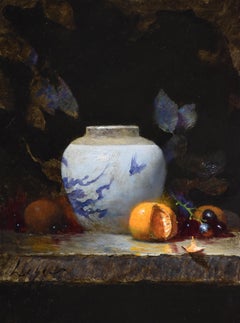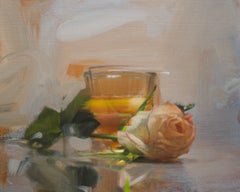Rowland Suddaby Paintings
Rowland Suddaby was born in Kimberworth, Yorkshire, England. Suddaby studied at the Sheffield College of Art, from 1926–30, winning a scholarship there. He came to London in 1931, aged 19, married young and found it a real struggle to make a living, in those early years. However, his work was noticed by Rex Nan Kivell and consequently, he had a successful show, at the Wertheim Gallery, in London, in 1935. They were always ready to give new talented artists a showcase for their work/ Then, Rowland had a series of shows, from 1936, at the Redfern Gallery. He was regarded, by the latter, as their artist successor to Christopher Wood and he painted vigorous and atmospheric pictures, in London and Cornwall, in the mid to late 1930s, some very much in the “Wood tradition”. These paintings, in both oils and watercolors, had spontaneity and a sureness of touch, which caught the imagination of critics and collectors alike.
After the outbreak of war, Suddaby moved with his wife, Elizabeth and their daughter, Joanna to the Suffolk countryside, settling near Sudbury. He found the landscape and coastline of East Anglia, an inspiration for the trademark pictures, for which he is now most widely known. Once seen, his paintings of Suffolk fields, ponds, trees and wooden fences, remain in the memory, as they are both so evocative of the landscape and so distinctly Rowland Suddaby. During the 1940s and 50s, Suddaby continued his still-life painting, which also became very popular with visitors, to shows at the Leger Galleries and more locally, at the Colchester Art Society, of which he was also a founder member.
By the start of the 1960s, Suddaby had become increasingly interested in abstraction and started to experiment with his work, mainly in watercolor and gouache. It is, perhaps indicative of the fact, that he regarded these works as mainly for his pleasure and not for exhibition, which is why he didn't sign them. After his death, a rich collection of these abstracts came to light, work viewed by his family and others, as a very significant contribution to his life's work as an artist. Suddaby's work was acquired by many prominent collectors and public bodies, including the V & A Museum. There are 24 examples in the Government Art Collection alone.
1950s Rowland Suddaby Paintings
Oil, Board
2010s Realist Rowland Suddaby Paintings
Oil, Board
2010s Expressionist Rowland Suddaby Paintings
Oil, Board
1950s Realist Rowland Suddaby Paintings
Paper, Oil, Cardboard
2010s Realist Rowland Suddaby Paintings
Oil, Board
2010s Contemporary Rowland Suddaby Paintings
Oil, Cardboard
2010s Photorealist Rowland Suddaby Paintings
Oil, Board
21st Century and Contemporary Old Masters Rowland Suddaby Paintings
Oil, Board
1980s French School Rowland Suddaby Paintings
Oil, Board
2010s Realist Rowland Suddaby Paintings
Oil, Board
2010s Abstract Rowland Suddaby Paintings
Board, Canvas, Oil
2010s Realist Rowland Suddaby Paintings
Canvas, Oil, Board
2010s Realist Rowland Suddaby Paintings
Oil, Board
20th Century Rowland Suddaby Paintings
Oil
20th Century Rowland Suddaby Paintings
Oil
20th Century Rowland Suddaby Paintings
Oil
20th Century Rowland Suddaby Paintings
Oil




